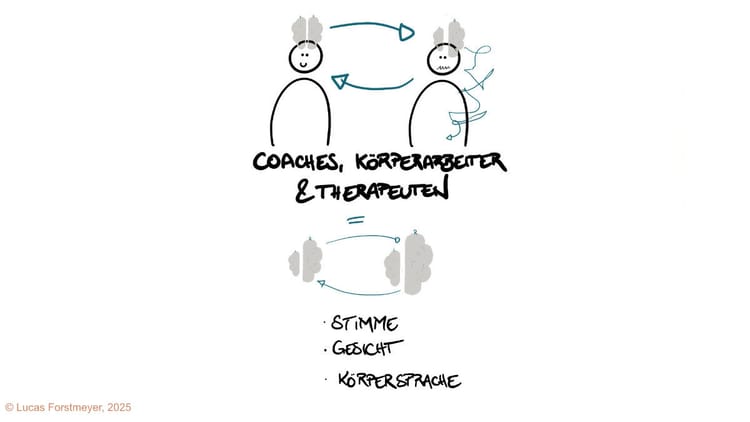3.4: Healing Through Resonance: Why Therapy Must Replicate the Early Parent-Child Relationship

If the deepest wounds of our lives were formed before we had words, how can we heal them in adulthood? If the foundation of our nervous system was built on unsafety, how can we rebuild stability later on? The answer lies not in more understanding, but in recreating the biological process that was missing in childhood: right-hemispheric resonance.
The Problem: The Wound Is Pre-linguistic
The unstable base—the implicit feeling of unsafety—was formed during the pre-linguistic phase of life. The patterns of danger, dysregulation, and relational difficulty are stored not as conscious thoughts but as bodily states.
That’s why talking alone can never be enough. We can’t fully revise or heal an implicit pattern using explicit, left-hemispheric language. This is the core reason why so many well-intentioned therapeutic approaches fail to reach the deepest injuries.
The Solution: Resonance Heals What Absence Created
Allan Schore’s perspective points the way forward: What was damaged through the absence of right-to-right resonance must be healed through the presence of right-to-right resonance.
This means that in coaching, therapy, and bodywork, we must bring this nonverbal, resonant connection to the forefront. The therapeutic relationship becomes a living space in which the client’s nervous system can finally experience the safety and regulation that were missing in childhood.
The Therapist’s Task: Resonating Together 🎶
To make this possible, we as coaches and therapists must become experts in creating right-hemispheric connection. We communicate through channels that go far beyond words:
- Through voice: Melody and tone (prosody) convey safety and reach the nervous system more directly than content.
- Through facial expression: Presence and emotional attunement communicate empathy beyond language.
- Through breath and body language: Adjusting our breathing or mirroring posture creates unconscious synchronization.
The goal is a shared resonant field. When a client recounts something painful, we feel with them. When they test the safety of the bond, we remain steady. Through this resonance, implicit patterns can be re-experienced and transformed—something pure thinking could never achieve.
Effective work with early wounds is not primarily a cognitive task but a biological process. The therapist creates a space of resonance that allows the client’s brain to update its old maps and learn to act as if the world can now be safe.
Sources
- Iain McGilchrist: The Master and His Emissary
- ****Iain McGilchrist (Buch):****The Matter With Things
- Schore: Affect Regulation and the Origin of the Self (APA) | Buch (1994)
- Schore/Schore: Modern Attachment Theory & Affect Regulation | Studie (2007)
Related Articles
- 3.1: The Unfinished Brain: Why the First Two Years of Life Are Crucial
- 3.3: The 'As If' Feeling: How Early Experiences Shape Our Implicit Worldview
- 2.2: The Silent Thought: How True Insight Emerges Before Words
- 4.2: The Miracle of Stability: Why the Body Is a River, Not a Machine
- The Therapeutic Relationship